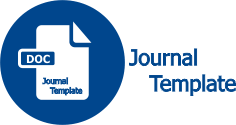Analisis dan Visualisasi Periodisitas Gempa Bumi di Maluku Utara
Abstract
Keywords
Full Text:
PDF (Bahasa Indonesia)References
Brilliantina, M. V., Pratiwi, H., & Susanti, Y. (2021). Analisis Seismisitas pada Data Gempa Bumi di Provinsi Maluku Utara Penerapan Model Epidemic Type Aftershock Sequence (ETAS). Prosiding Pendidikan Matematika Dan Matematika.
Rizaty, M. A. (2022). 10.519 Gempa Bumi Guncang Indonesia Sepanjang 2021. Databoks. https://databoks.katadata.co.id/datapublish/2022/06/20/10519-gempa-bumi-guncang-indonesia-sepanjang-2021#:~:text=Berdasarkan catatan Badan Pusat Statistik,Pulau Sulawesi%2C yaitu 925 kali.
Douwe G. van der Meer, Douwe J.J. van Hinsbergen, Wim Spakman,Atlas of the underworld: Slab remnants in the mantle, their sinking history, and a new outlook on lower mantle viscosity,Tectonophysics,Volume 723,2018,Pages 309-448,ISSN 0040-1951,https://doi.org/10.1016/j.tecto.2017.10.004. (https://www.sciencedirect.com/science/article/pii/S0040195117304055)
E. Irwansyah and E. Winarko, “Spatial Data Clustering and Zonation of Earthquake Building Damage Hazard Area,” in EPJ Web of Conferences, 2014, pp. 1–6.
M. Affan, M. Syukri, L. Wahyuna, and H. Sofyan, “Spatial Statistic Analysis of Earthquakes in Aceh Province Year 1921-2014: Cluster Seismicity,” Aceh Int. J. Sci. Technol., vol. 5, no. 2, Aug. 2016, doi: 10.13170/aijst.5.2.4878.
H. Pratiwi, S. S. Handajani, I. Susanto, S. Sangadji, R. Meilawati, and I. S. Khairunnisa, “Hierarchical Clustering Algorithm for Analyzing Risk of Earthquake on Sumatra Island,” in 2021 International Conference on Electrical, Computer, Communications and Mechatronics Engineering (ICECCME), Oct. 2021, pp. 1–6. doi: 10.1109/ICECCME52200.2021.9590890.
M. S. Geetha Devasena, R. Kingsy Grace, and G. Gopu, “PDD: Predictive Diabetes Diagnosis using Datamining Algorithms,” in 2020 International Conference on Computer Communication and Informatics (ICCCI), Jan. 2020, pp. 1–4. doi: 10.1109/ICCCI48352.2020.9104108.
P. Prihandoko and B. Bertalya, “A Data Analysis of the Impact of Natural Disaster using K-Means Clustering Algorithm,” Kursor, vol. 8, no. 4, p. 169, Oct. 2017, doi: 10.28961/kursor.v8i4.109.
Prihandoko, Bertalya, and M. I. Ramadhan, “An analysis of natural disaster data by using K-means and K-medoids algorithm of data mining techniques,” in 2017 15th International Conference on Quality in Research (QiR) : International Symposium on Electrical and Computer Engineering, Jul. 2017, pp. 221–225. doi: 10.1109/QIR.2017.8168485.
N. Puspitasari, J. A. Widians, and N. B. Setiawan, “Customer segmentation using bisecting k-means algorithm based on recency, frequency, and monetary (RFM) model,” J. Teknol. dan Sist. Komput., vol. 8, no. 2, pp. 78–83, Apr. 2020, doi: 10.14710/jtsiskom.8.2.2020.78-83.
B. E. V. Comendador, L. W. Rabago, and B. T. Tanguilig, “An educational model based on Knowledge Discovery in Databases (KDD) to predict learner’s behavior using classification techniques,” in 2016 IEEE International Conference on Signal Processing, Communications and Computing (ICSPCC), Aug. 2016, pp. 1–6. doi: 10.1109/ICSPCC.2016.7753623.
DOI: http://dx.doi.org/10.22441/fifo.2024.v16i1.004
Refbacks
- There are currently no refbacks.
Jurnal Ilmiah FIFO
Fakultas Ilmu Komputer Universitas Mercu Buana
Jl. Raya Meruya Selatan, Kembangan, Jakarta 11650
Tlp./Fax: +62215871335
p-ISSN: 2085-4315
e-ISSN: 2502-8332
http://publikasi.mercubuana.ac.id/index.php/fifo
e-mail:[email protected]

This work is licensed under a Creative Commons Attribution-NonCommercial 4.0 International License.













